What Is the Easiest Perennial Flower to Grow from Seed? Discover Top Choices
Starting a garden can be a rewarding experience, especially when you choose plants that are easy to grow. If you’re looking for perennial flowers, you’re in luck—there are plenty that thrive from seed. One of the easiest perennial flowers to grow is foxglove, which can be planted indoors or out, making it perfect for beginners. This beautiful plant not only brightens up your garden but also attracts pollinators, adding to the natural beauty of your space.
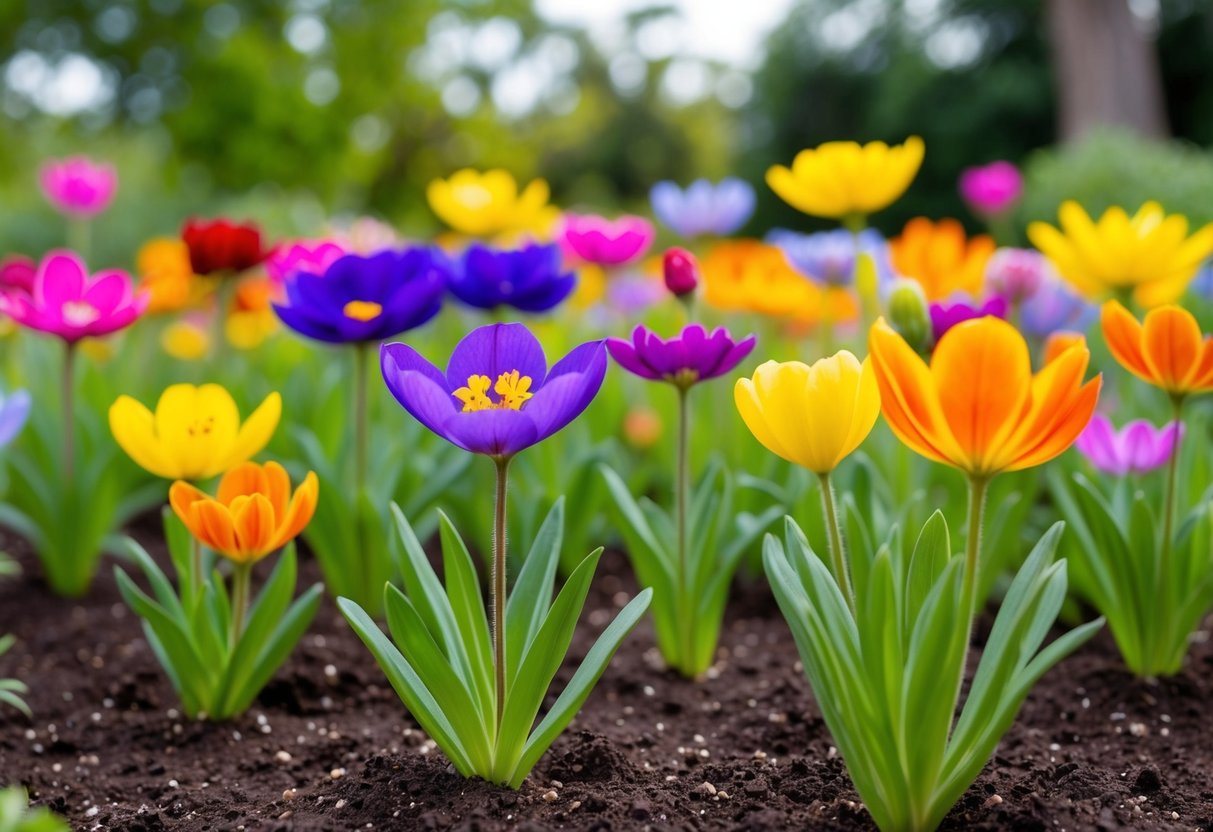
You’ll find that growing flowers from seed is a cost-effective way to fill your garden with color. Many of these flowers are low-maintenance and flourish under a variety of conditions. For example, calendula, with its bright yellow and orange blooms, makes a charming addition to any garden and can be direct sown after the last frost.
Choosing the right perennials can bring life to your garden year after year. If you’re ready to dig in, consider options like foxglove and calendula to get started. These easy-to-grow flowers are not only beautiful but also practical for both experienced and novice gardeners alike.
Choosing the Right Perennial Seeds

Picking the right perennial seeds is key to a thriving flower garden. You’ll learn about what perennials are and discover some of the easiest perennial flowers to grow from seed.
Understanding Perennials
Perennials are plants that live for more than two years. After planting, they continue to grow and bloom in cycles. These plants often provide structure and beauty to your garden without the need for yearly replanting.
They can vary greatly in size, color, and growth habits. Some perennials even have the ability to self-seed, which means they can naturally regenerate in your garden. This makes them convenient and cost-effective options for gardeners. When choosing perennial seeds, consider your climate, soil type, and desired flower color.
Top Easy Perennials to Grow from Seed
Some perennial flowers are particularly easy to grow and maintain. For example, foxglove is a beautiful flower that can grow up to 1-3 feet tall and thrives in zones 4-9. Foxglove attracts pollinators and is ideal for beginners due to its low maintenance.
Another great option is Allium, which is known for its unique, spherical blooms and adaptability to different climates. It grows well in zones 3-11 and requires minimal effort once established.
Lastly, consider planting Linum perenne, which is a compact perennial flowering plant. It can reach up to 24 inches tall and is hardy in zones 7-9. These choices are perfect for creating a vibrant, long-lasting flower garden with minimal fuss.
Seed Starting Basics
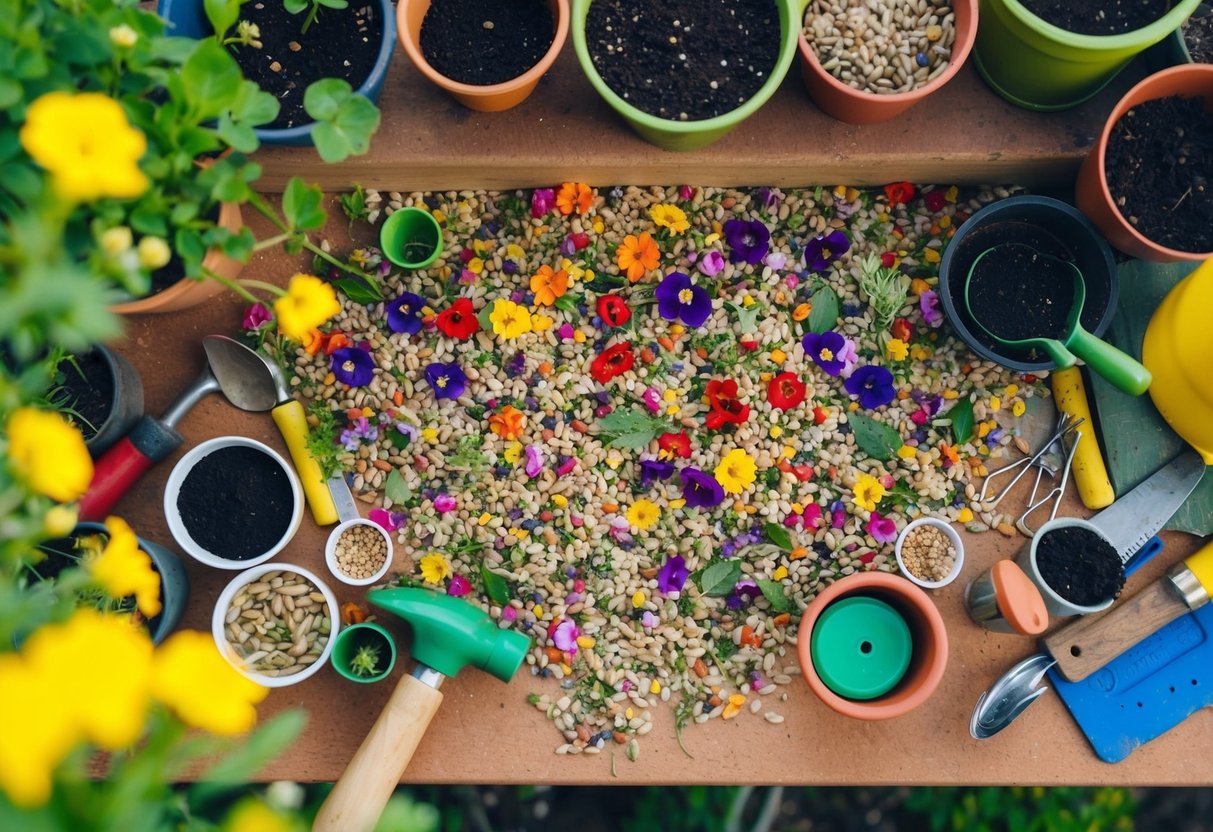
Growing perennials from seed offers a rewarding gardening experience. It’s key to know when to sow seeds and understand germination essentials to get your plants off to a great start.
When to Sow Seeds
Timing is important when starting seeds. For many perennials, it’s best to sow outdoors in spring or summer, at least two months before the first fall frost. This gives seedlings time to establish.
If you plan to start seeds indoors, do this six to eight weeks before the last expected frost. This lets you move strong plants outside once it warms up. Keep track of frost dates in your area and plan accordingly. Remember, each perennial may have its own specific requirements, so checking seed packets for guidance can be helpful.
Germination Essentials
Proper germination relies on a few key conditions. Light, temperature, and moisture are crucial. Many seeds need warmth to sprout, which usually means keeping them at room temperature. A temperature range of 65-75°F (18-24°C) is usually good for germination.
Soil moisture should be consistent but not soggy. Water gently to avoid disturbing seeds. Some seeds also need light exposure to germinate, so they should not be completely covered with soil. A thin layer of soil or fine vermiculite is often enough. Always follow specific instructions on seed packets for best results.
By focusing on these basics, you’ll enjoy seeing your perennials flourish.
Caring for Young Perennials
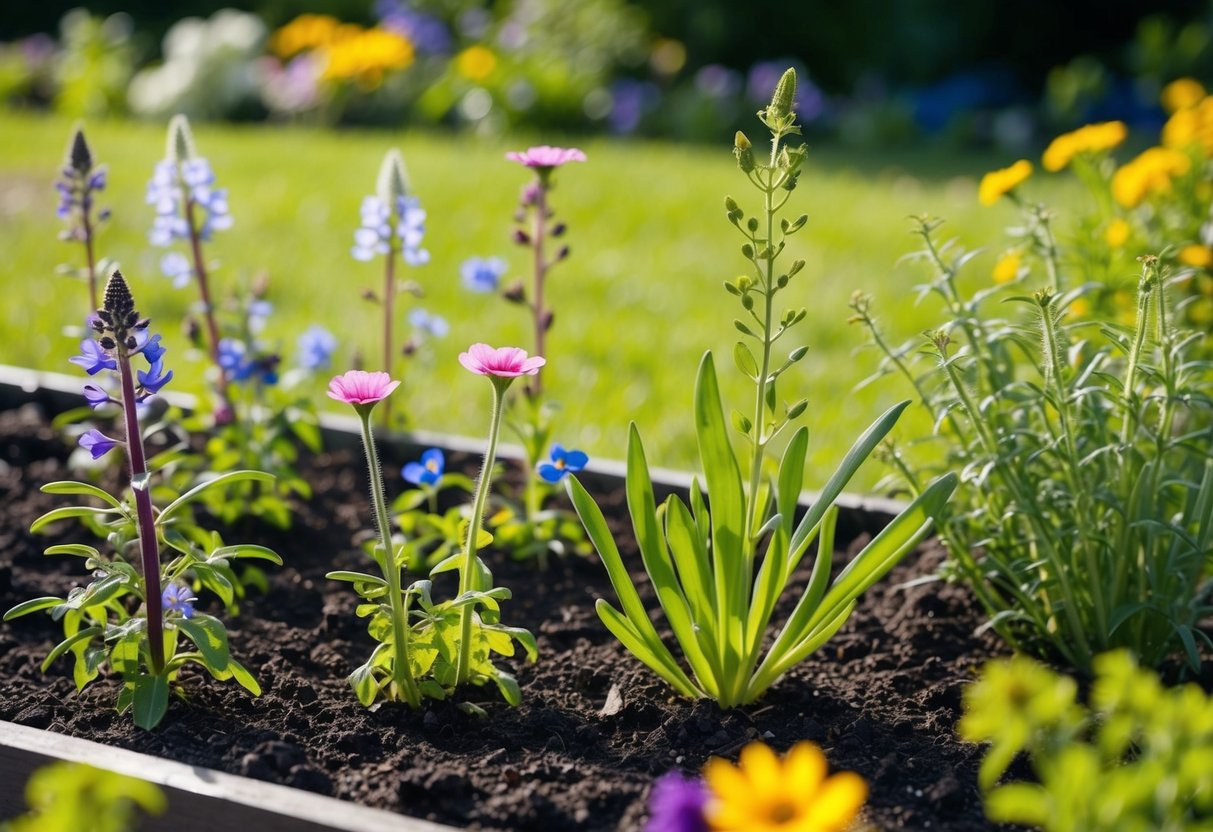
Taking care of young perennials is key to their healthy development. Once seeds germinate, you must manage their environment, and later, when they’re ready, move them to your garden while ensuring their growth continues smoothly.
Post-Germination Care
After your perennial seeds sprout, they need consistent conditions to thrive. Light is crucial. Position them near a sunny window or under grow lights for optimal light exposure. Aim for about 12-16 hours of light each day.
Maintain a stable temperature. Most young seedlings grow best at 65-75°F (18-24°C). Use a fan or open a window to provide gentle air circulation to prevent fungal diseases.
Water is vital, but don’t overdo it. Keep the soil moist but not soggy. A good practice is to water from the bottom by placing pots in a tray with water. This encourages the roots to grow deeper. Lastly, start fertilizing once leaves appear, using a half-strength balanced liquid fertilizer every two weeks.
Transplanting to the Garden
Transplanting your young perennials to the garden marks a new growth stage. First, harden off your seedlings over a week by gradually exposing them to outdoor conditions. Begin with a few hours in a shaded spot, slowly increasing time and sunlight exposure.
Choose a day that’s mild and overcast for the actual planting to reduce stress. Dig a hole twice as wide as the root ball but no deeper. Position the plant so it’s at the same soil level as in its pot.
Water them thoroughly after planting. Apply a layer of mulch around the plants to retain moisture and suppress weeds. Keep an eye on your young flowering perennials as they settle into their new home, and they will soon become a vibrant part of your garden.
Designing Your Perennial Garden
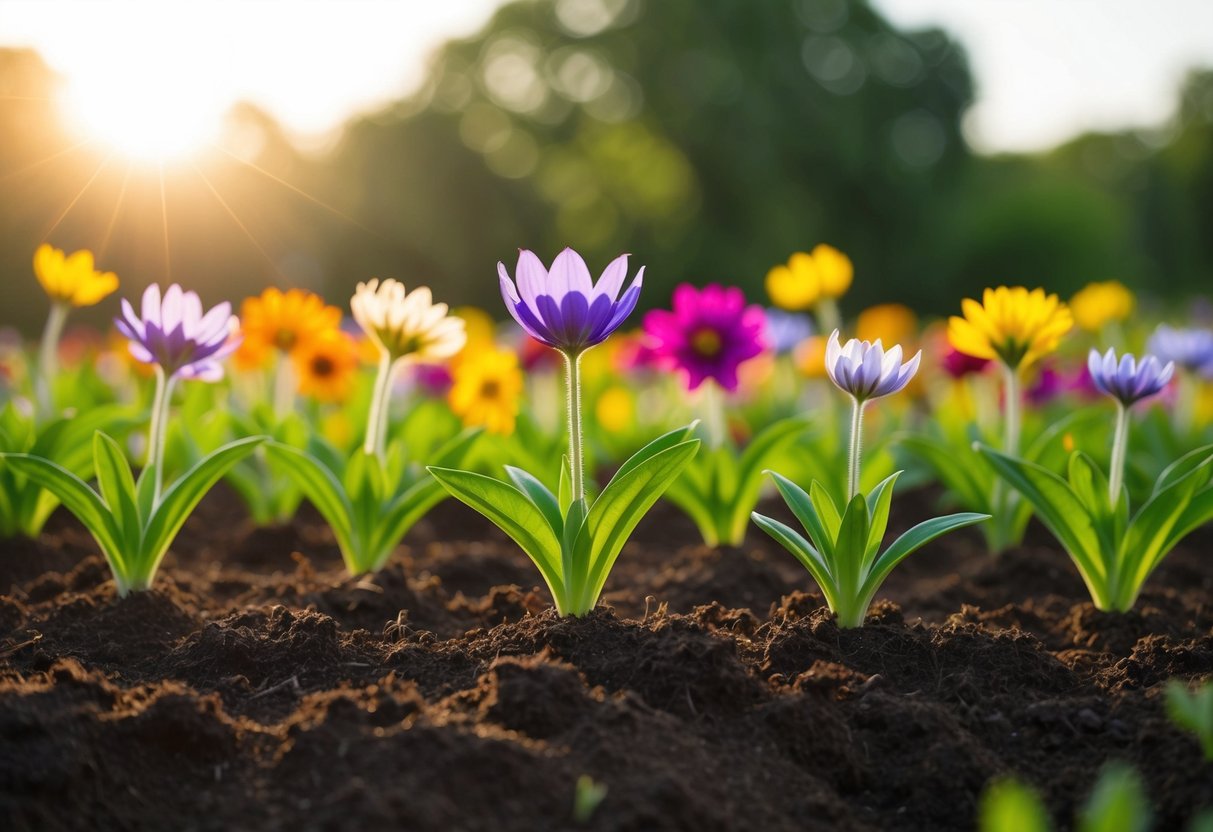
When planning your perennial garden, consider elements that will keep it vibrant year-round. Thoughtfully combining various colors and textures can create a visually striking and harmonious space.
Creating Year-Round Interest
To keep your garden looking lively throughout the year, choose perennials that bloom in different seasons. Early bloomers like snowdrops can provide color in spring. Mid-summer selections, such as Echinacea, bring vibrancy during the warmer months, while late bloomers like asters add beauty in autumn.
Including evergreens and plants with interesting foliage ensures your garden has structure even in winter. Integrating a mix of heights and shapes keeps the visual interest alive across all seasons. Adding grasses or shrubs that maintain their color or texture in colder months can help sustain your garden’s appeal.
Combining Colors and Textures
When selecting plants, think about how colors and textures will work together. Complementary colors like purples and yellows can make your garden pop, while monochromatic schemes offer a more subtle and peaceful look. Consider the size and shape of leaves and flowers, as combining different textures can create depth.
Tips for Harmonious Design:
- Use a color wheel to find pleasing combinations.
- Combine smooth leaves with spiky ones for contrast.
- Use repetition of textures or colors to unify the space.
A carefully curated mix of plants not only enhances visual appeal but also attracts pollinators, making your garden a lively ecosystem.
Balancing these elements transforms your space into a beautiful and thriving flower border that pleases the eye and supports beneficial wildlife.
Perennial Favorites and Their Care
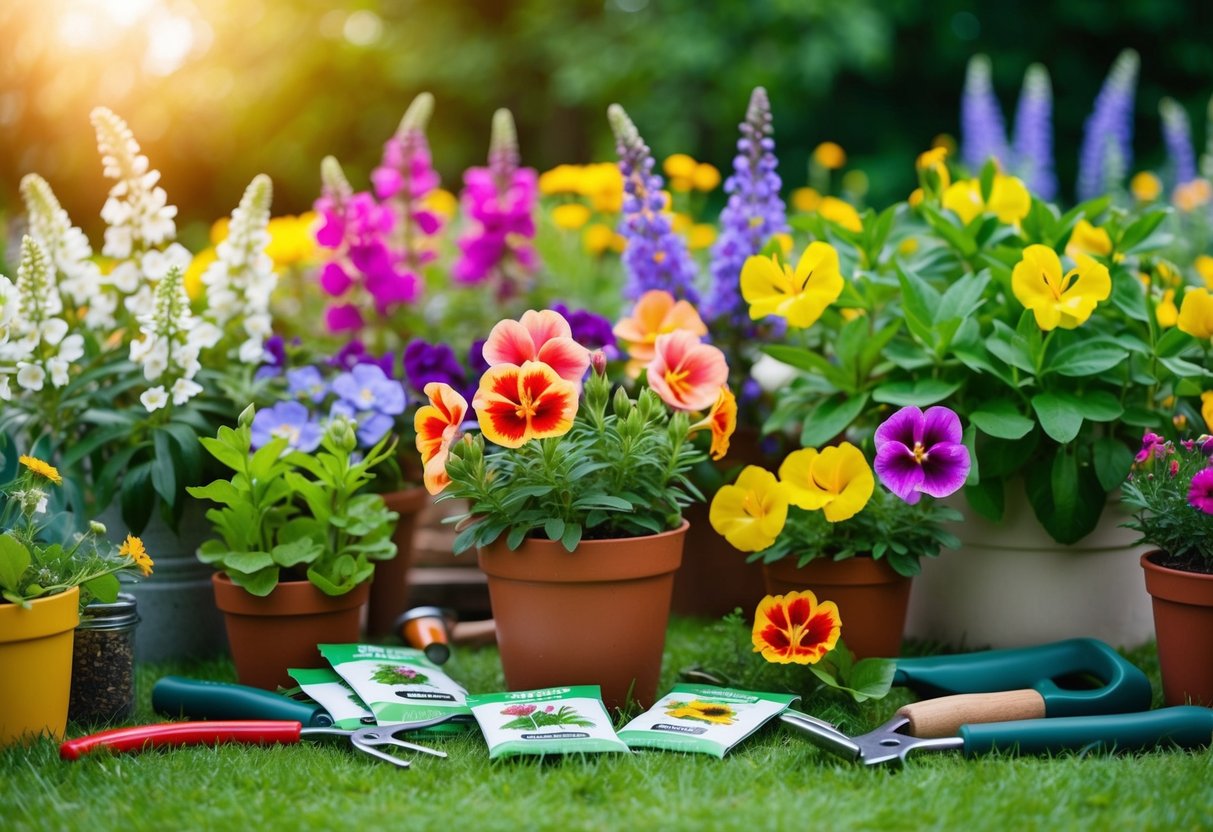
Perennial flowers are a great addition to your garden because they come back year after year. Many varieties are easy to grow and require minimal maintenance, making them perfect for both beginners and seasoned gardeners.
Highlighting Easy-to-Grow Varieties
Coneflower and black-eyed Susan are top choices for effortless gardening. These beautiful flowers thrive in sunny spots and are drought-tolerant. Yarrow and columbine are other excellent options and add a splash of color to your garden. Phlox offers vibrant blooms and does well in partial shade.
Echinacea purpurea, also known as the purple coneflower, is beloved for its striking flowers. It’s a dependable plant that attracts pollinators. Bee balm and lupine add height and texture, while dianthus and achillea bring beautiful, delicate blooms. For late-season color, consider sedum and Joe Pye weed, which are both hardy and easy to care for.
Special Considerations for Specific Plants
Foxglove and peonies require well-drained soil and regular watering, particularly during dry spells. Gaillardia, also known as blanket flower, thrives in poor soil and needs little maintenance. If you’re considering lilies or hemerocallis spp (daylilies), remember they prefer a sunny location and regular watering.
Hellebore is ideal for shady spots and enjoys cooler temperatures. Meanwhile, shasta daisies and self-seeding plants like delphinium need plenty of sunlight. Catmint and calendula are known for their hardiness and ability to grow in a range of conditions. Consider baptisia australis and penstemon for their easy care and stunning blooms. Remember, understanding each plant’s unique needs ensures a thriving garden.






